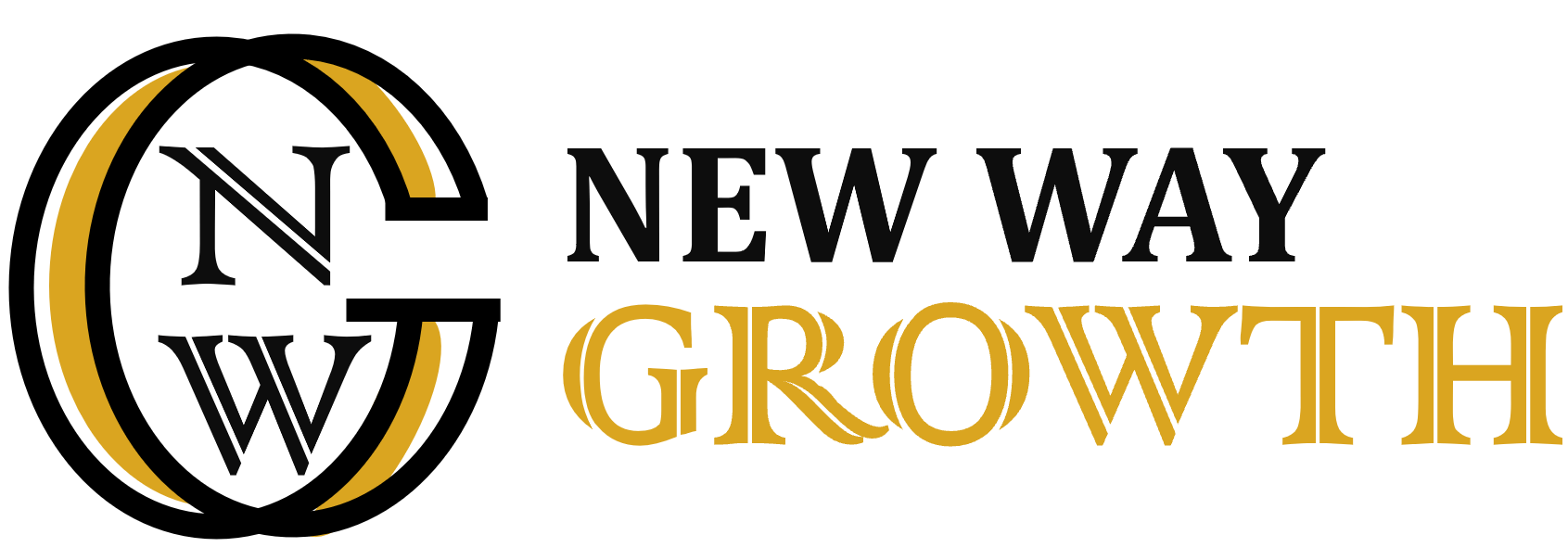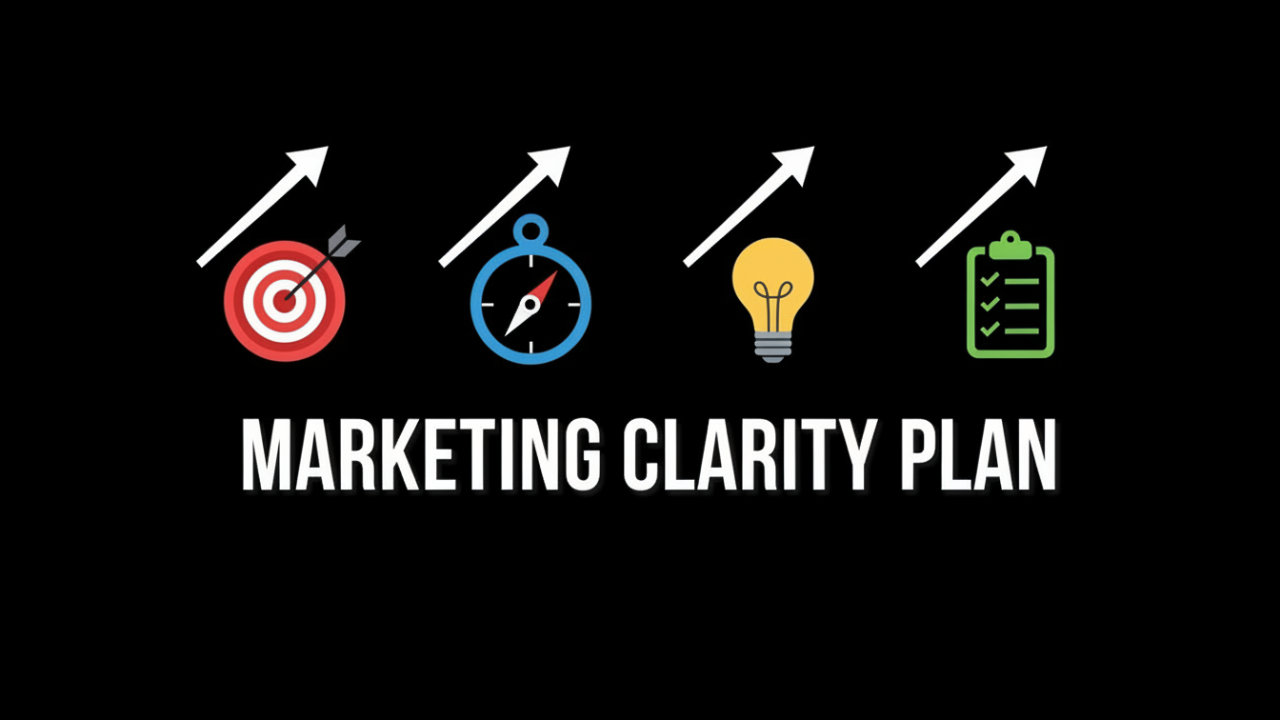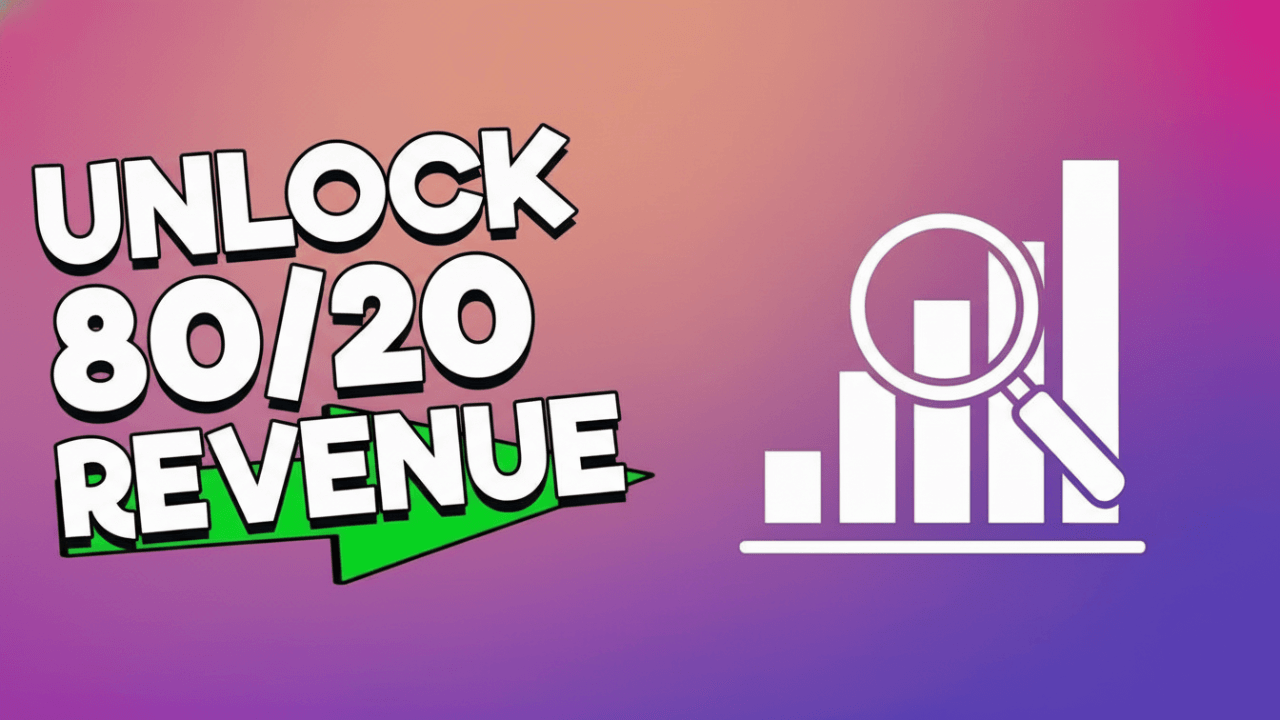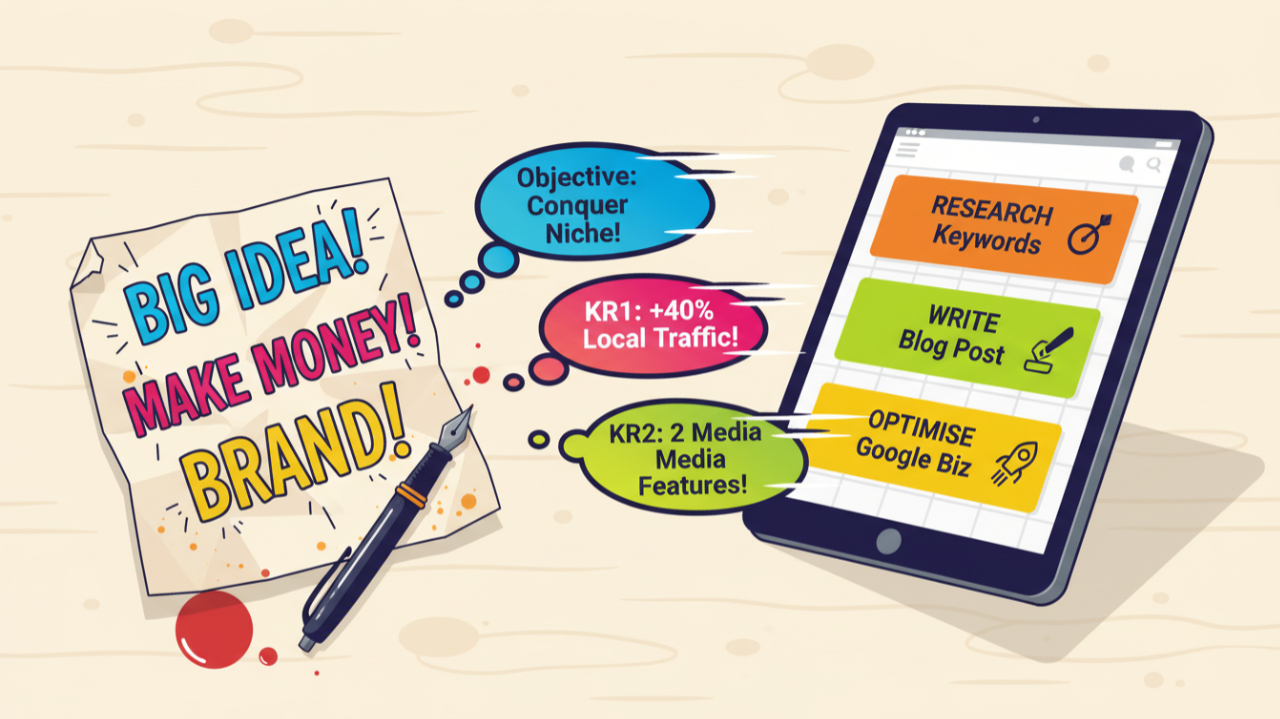Which of the 3 Generic Strategies Is Best For My Business?
Which Competitive Strategy is Best for My Business?
When a company enters a market, they must decide how to compete. They must decide how they want to differentiate themselves from their competitors.
In 1985 in 'Competitive Advantage: Creating and Sustaining Superior Performance', Michael Porter introduced his three generic strategies for companies who want to compete in their market: low-cost leadership, differentiation, and focus.
You can use the following matrix to help you decide which strategic approach suits your business best. It helps to consider who is doing well in your industry—who has the most unique product or service? Who has the highest market share? What niched segments are being looked at by you or your competitors?
If you want above average returns Porter recognised you can only operate in one the of the three strategies, trying to be a master of two or more is bad for business.
You can use the model to ascertain the advantages of moving from one strategy to another. The traditional path is low cost to focused differentiation, to broader differentiation in the mass market.
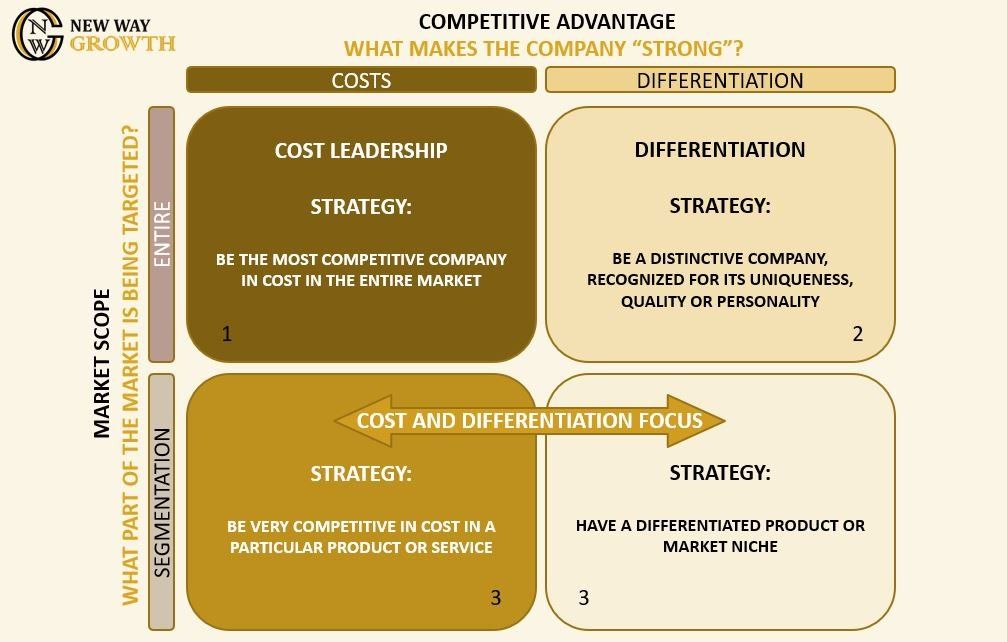
What is Competitive Advantage?
The term competitive advantage refers to a company's ability to provide products or services that are more valuable than those of its competitors.
For example, if a company has a competitive advantage in its pricing model, it will charge less for its products than its competitors because it is able to produce them at a lower cost. The company then uses that lower price as a way of attracting customers and increasing sales volume.
However, competitive advantage is not always about lowering costs and prices; sometimes it can be about providing an experience that the customer can't get anywhere else or providing something that no one else offers.
What is Market Scope?
Market scope refers to the size of a market. It is used to understand how much of a product or service consumers are looking for, and whether or not your business can fill that need.
If you want to know if your business idea has potential, you should first understand what market scope means. The more people who are interested in purchasing your product, the better!
While effective marketing strategies are essential, it's also critical to understand your product's standing in the market. Explore this concept further in our related post on Why Is Product Market Fit So Important?
The 3 Generic Strategy Types Are:
Cost Leadership
Cost leadership is a way of competing in the market by offering customers the best value for money. To be cost leaders, companies have to have lower costs than their competitors so they can offer cheaper products and services. This means that they need to find ways to reduce costs. For example, they might use technology or economies of scale to increase efficiency or lower their overheads.
Examples of Cost Leadership:
- Aldi: Has mastered cost leadership by leveraging its vast supply chain network, bulk purchasing, and efficient logistics to keep prices low for consumers.
- Ryanair: By focusing on cost-cutting measures such as using a single aircraft model and operating short-haul flights, Ryanair has maintained lower operational costs, allowing it to offer competitive fares.
Differentiation
Differentiation is a way of competing in the market by offering customers something different than your competitors do. Companies that differentiate themselves from their rivals may do so through unique product features, better offers or superior customer service. For example, they might offer goods at a premium price because they offer some feature that competitors don't provide (such as luxury) or produce goods with superior quality compared to others on the market (such as organic food).
Examples of Differentiation:
- Apple: Apple's focus on design, innovation, and user experience sets its products apart. From the sleek design of its devices to the seamless integration of hardware and software, Apple commands a premium price for its differentiated products.
- Tesla: Known for its electric vehicles, Tesla differentiates through cutting-edge technology, superior performance, and a unique brand identity focused on sustainability and innovation.
Focus
Focus is a way of competing in the market by offering customers exactly what they want from you and nothing more than that. Companies that focus on one area can do it better than anyone else in the industry and so will attract customers who want this particular service or product. For example, if a company focuses on offering only high-end designer clothing, then it will attract high-income consumers.
Examples of Focus:
- Rolls-Royce: By concentrating on the luxury automobile segment, Rolls-Royce caters exclusively to high-net-worth individuals seeking bespoke, high-quality vehicles.
- Whole Foods Market: Whole Foods focuses on the organic and natural foods segment, appealing to health-conscious consumers willing to pay a premium for quality and ethically sourced products.
Choosing the Right Strategy for Your Business
To determine which strategic approach suits your business best, consider who is doing well in your industry—who has the most unique product or service? Who has the highest market share? What niche segments are being looked at by you or your competitors?
Analysing Market Conditions
Understanding market conditions is crucial for selecting the appropriate strategy. Analyse the competitive landscape, customer preferences, and potential gaps in the market. This analysis will help you identify opportunities for cost leadership, differentiation, or a focused approach.
- Competitive Landscape: Identify key players in your industry and their strategies. Are they competing on price, unique features, or targeting specific market segments?
- Customer Preferences: Conduct market research to understand what your customers value most. Are they price-sensitive, or do they prioritise quality and unique features?
- Market Gaps: Look for unmet needs or underserved segments in the market. These gaps can present opportunities for differentiation or focus strategies.
Assessing Internal Capabilities
Evaluate your company's strengths, weaknesses, resources, and capabilities. Your internal assessment should align with the chosen strategy to ensure successful implementation.
- Strengths: Identify core competencies that can give you a competitive edge. For instance, if you have efficient manufacturing processes, a cost leadership strategy might be suitable.
- Weaknesses: Be aware of limitations that could hinder strategy execution. Addressing these weaknesses is crucial for sustainable competitive advantage.
- Resources and Capabilities: Ensure you have the necessary resources, such as technology, skilled workforce, and financial strength, to support the chosen strategy.
Strategic Fit and Implementation
Selecting the right strategy involves ensuring a strategic fit between your business model and the market environment. Implementation requires careful planning, resource allocation, and ongoing monitoring.
- Strategic Fit: Align your chosen strategy with your company's mission, vision, and values. A misalignment can lead to strategic failures.
- Implementation Plan: Develop a detailed plan outlining the steps, timelines, and resources needed for implementation. Assign responsibilities and set measurable goals to track progress.
- Ongoing Monitoring: Continuously monitor market trends, customer feedback, and competitive actions. Be prepared to adapt and refine your strategy as needed.
Competitive Advantage: The Cornerstone of Success
As previously stated, the term competitive advantage refers to your company's ability to provide products or services that are more valuable than those of your competitors. Achieving and sustaining competitive advantage is essential for long-term success.
Types of Competitive Advantage
- Cost Advantage: A company achieves a cost advantage by producing goods or services at a lower cost than competitors. This allows for competitive pricing, attracting price-sensitive customers and increasing market share.
- Differentiation Advantage: A company achieves a differentiation advantage by offering unique features, superior quality, or exceptional customer service. This creates brand loyalty and allows for premium pricing.
Building Competitive Advantage
- Innovation: Continuously innovate to stay ahead of competitors. Invest in research and development to create new products, improve processes, and enhance customer experiences.
- Quality: Focus on delivering high-quality products and services. Quality can be a significant differentiator, leading to customer satisfaction and loyalty.
- Customer Experience: Provide exceptional customer experiences. Personalised service, responsive support, and seamless interactions can set you apart from competitors.
Sustaining Competitive Advantage
- Adaptability: Stay agile and adaptable to changing market conditions. Monitor industry trends, technological advancements, and customer preferences to remain relevant.
- Continuous Improvement: Embrace a culture of continuous improvement. Regularly assess and enhance your processes, products, and services to maintain a competitive edge.
- Strategic Partnerships: Form strategic partnerships and alliances to leverage complementary strengths. Collaborations can enhance innovation, expand market reach, and improve efficiency.
Types of Competitive Advantage
- Cost Advantage: A company achieves a cost advantage by producing goods or services at a lower cost than competitors. This allows for competitive pricing, attracting price-sensitive customers and increasing market share.
- Differentiation Advantage: A company achieves a differentiation advantage by offering unique features, superior quality, or exceptional customer service. This creates brand loyalty and allows for premium pricing.
The Importance of Market Scope
Market scope refers to the size of a market. It is used to understand how much of a product or service consumers are looking for, and whether or not your business can fill that need. Understanding market scope is crucial for evaluating the potential of your business idea.
Determining Market Scope
- Market Research: Conduct thorough market research to gather data on market size, growth trends, and customer demographics. Use surveys, interviews, and secondary research to obtain valuable insights.
- Competitive Analysis: Analyse competitors' market share and positioning. Identify their strengths and weaknesses to understand where your business can fit in.
- Customer Segmentation: Segment the market based on demographics, psychographics, and behavior. Identify specific customer groups that align with your product or service offering.
Evaluating Market Potential
- Market Size: Assess the overall size of the market and the potential for growth. A large and growing market indicates higher potential for success.
- Target Audience: Define your target audience and evaluate their purchasing power, preferences, and needs. A well-defined target audience allows for focused marketing efforts.
- Market Trends: Stay informed about market trends and emerging opportunities. Trends such as technological advancements, changing consumer preferences, and regulatory changes can impact market potential.
Market Scope and Strategic Decision-Making
Understanding market scope is essential for making informed strategic decisions. It helps in determining the feasibility of your business idea and aligning your strategy with market opportunities.
- Product-Market Fit: Ensure your product or service meets the needs and preferences of your target audience. A strong product-market fit enhances the chances of success.
- Market Entry: Decide on the most suitable market entry strategy based on market scope. Consider factors such as market saturation, competition, and customer demand.
- Resource Allocation: Allocate resources effectively based on market potential. Focus on high-potential markets to maximise returns on investment.
Adapting Strategies to Changing Market Dynamics
You must be prepared to adapt your strategies to stay competitive. Market conditions, technological advancements, and customer preferences are constantly evolving.
Monitoring Market Trends
Stay informed about industry trends, technological advancements, and regulatory changes. Regularly monitor competitor actions and customer feedback to identify emerging opportunities and threats.
- Trend Analysis: Use data analytics and market research to track trends and predict future developments. Identify patterns and shifts that could impact your industry.
- Competitive Intelligence: Gather intelligence on competitor strategies and performance. Understanding their strengths and weaknesses can help you refine your own strategy.
Flexibility and Agility
Develop a flexible and agile organisational culture that can respond quickly to changes. Encourage innovation, empower employees to make decisions, and foster a proactive mindset.
- Scenario Planning: Conduct scenario planning to anticipate potential changes in your market. Develop contingency plans for different scenarios to ensure readiness.
- Continuous Improvement: Embrace a culture of continuous improvement. Regularly assess your processes, products, and strategies to identify areas for enhancement.
Customer-Centric Approach
Keep customers at the center of your strategy. Understand their evolving needs, preferences, and pain points. Build strong relationships and engage with customers through various channels.
- Customer Feedback: Actively seek customer feedback through surveys, reviews, and social media. Use feedback to make informed decisions and improve your customer experiences.
- Personalisation: Leverage data and technology to deliver personalised experiences. Tailor products, services, and marketing messages to your individual customer preferences.
Takeaway:
It's important for you to decide how you want to compete in your market. Michael Porter's three generic strategies—Cost Leadership, Differentiation, and Focus—provide valuable frameworks for achieving and sustaining competitive advantage. In understanding your market conditions, assessing internal capabilities, and aligning strategies with market opportunities, you can make informed decisions that drive success.
Selecting the right strategy requires careful analysis, planning, and execution. Whether you choose to compete on price, unique features, or target specific market segments, the key is to remain adaptable and customer-centric. Continuously monitor market dynamics, innovate, and improve to stay ahead of competitors.
If you need help with Strategic and Tactical Planning, please do get in touch. Adam Payne, our founder, is a specialist in this area with decades of experience in strategic planning and business growth. Contact Adam here for personalised guidance and support.
Remember, choosing the right competitive strategy is not a one-time decision. It requires ongoing evaluation and adaptation to ensure long-term success.
Additional Resources
For further reading and insights on strategic planning and competitive advantage, explore these resources:
- Competitive Advantage: Creating and Sustaining Superior Performance by Michael Porter
- Blue Ocean Strategy by W. Chan Kim and Renée Mauborgne (Excellent Book!)
- The Innovator's Dilemma by Clayton Christensen
- Good to Great: Why Some Companies Make the Leap... and Others Don't by Jim Collins
- The Art of Strategy: A Game Theorist's Guide to Success in Business and Life by Avinash K. Dixit and Barry J. Nalebuff
These books offer valuable perspectives and practical strategies to help you navigate the complexities of competitive advantage and business growth.
Pay It Forward, Sharing Is Caring!
